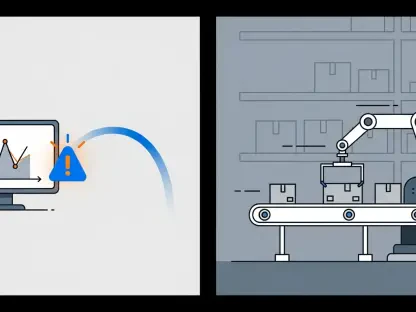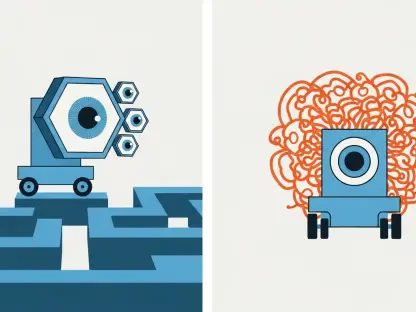Introduction: The Quest for Understanding Intelligence
In a world increasingly shaped by technology, the notion that artificial intelligence could serve as a mirror to reflect the deepest intricacies of human cognition captivates the imagination of scientists and thinkers alike. Could machines, through their complex algorithms and vast data processing, not only mimic human thought but also reveal the very essence of what makes humans intelligent? This question lies at the heart of a profound scientific endeavor, one that seeks to bridge the gap between artificial systems and the human mind. The stakes are high, as unraveling these mysteries could redefine humanity’s relationship with technology.
The significance of this pursuit resonates deeply in today’s society, where AI permeates daily life—from virtual assistants to autonomous vehicles. Beyond practical applications, the study of intelligence through computational models offers a unique opportunity to deepen self-understanding. By examining how machines “think,” researchers aim to uncover principles that might illuminate the nature of human consciousness, pushing the boundaries of both science and philosophy.
Foundations: The Intersection of AI and Human Cognition
The journey to comprehend intelligence through AI has roots in decades of efforts to model human thought processes. Early computer scientists drew inspiration from cognitive theories, attempting to replicate reasoning and problem-solving in machines. Over time, fields like computer vision and machine learning emerged, focusing on enabling systems to perceive and interpret the world in ways that parallel human senses, such as vision and language comprehension.
Key concepts like representation learning have become central to this exploration. This approach investigates how AI systems develop internal models of reality, often converging with mechanisms observed in human cognition. Such convergence suggests that artificial and human intelligence might share underlying principles, providing a foundation for deeper inquiry into what intelligence truly means across different forms of life and technology.
Key Contributions: Pioneering Insights in AI Research
Significant milestones in AI research have brought humanity closer to understanding intelligence through computational lenses. Breakthroughs in computer vision and generative models have demonstrated how machines can replicate aspects of human perception, from recognizing objects to creating art. These advancements not only showcase technical prowess but also hint at shared mechanisms between human and machine understanding.
Practical applications of these ideas span diverse domains, illustrating their transformative potential. From enhancing diagnostic accuracy in medical imaging to enabling robots to navigate complex environments, AI’s ability to process and interpret data mirrors human problem-solving in tangible ways. These developments engage curiosity about how far such parallels can extend.
Platonic Representation Hypothesis
One groundbreaking concept in this field posits that diverse AI models, regardless of their specific tasks, may converge toward a unified representation of reality. Known as the Platonic Representation Hypothesis, this idea suggests that as models scale in complexity and data exposure, they develop a shared “world model.” This phenomenon echoes human understanding, where disparate experiences coalesce into a coherent view of the world.
This hypothesis draws an intriguing parallel to philosophical ideas about underlying truths, hinting that both machines and humans might access a common framework of reality. Such convergence challenges researchers to consider whether intelligence, at its core, operates on universal principles that transcend individual systems or species.
Self-Supervised Learning Innovations
Advancements in self-supervised learning mark another leap forward, allowing AI systems to build internal representations without relying heavily on human-labeled data. By autonomously identifying patterns—such as grouping related pixels in an image or words in a text—these systems develop robust models of their environments. This mirrors how humans learn from observation and experience over time.
The implications of this innovation are vast, as it reduces the bottleneck of data preparation, making AI more scalable and adaptable. It also raises questions about the parallels between machine autonomy and human learning processes, suggesting that self-directed discovery might be a fundamental trait of intelligence.
Applications in Real-World Domains
The real-world impact of these concepts is evident in fields where AI intersects with human needs. Autonomous vehicles rely on sophisticated world models to navigate unpredictable roads, while medical imaging systems use pattern recognition to detect anomalies with precision. Robotics, too, benefits from these insights, enabling machines to interact with dynamic surroundings.
These applications underscore the practical value of studying intelligence through AI, demonstrating how theoretical research translates into solutions that enhance safety and efficiency. They also highlight the potential for further integration of machine capabilities into everyday life, reshaping industries and personal experiences alike.
Unique Approach: Prioritizing Fundamental Principles
What sets this exploration apart from mainstream AI development is a steadfast commitment to uncovering the core principles of intelligence, rather than focusing solely on performance metrics. While many in the field chase incremental improvements in speed or accuracy, this approach delves into the “why” behind intelligent behavior, seeking unexpected insights that might redefine the discipline.
This pursuit embodies a high-risk, high-reward philosophy, often venturing into uncharted territory without guaranteed outcomes. Such dedication to fundamental discovery distinguishes this work in a landscape frequently driven by immediate, tangible results, emphasizing long-term understanding over short-term gains.
The challenges of this method are notable, as operating without clear endpoints can strain resources and coordination. Yet, the occasional revelation of novel truths about intelligence justifies the gamble, offering glimpses into a future where the essence of cognition might be fully understood through computational means.
Current Landscape: AI Research and Education Today
The state of AI research into human-like intelligence remains dynamic, with ongoing projects pushing the boundaries of representation learning and multimodal systems. Initiatives across academic and industry labs explore how machines can integrate diverse inputs—text, images, and sound—into cohesive models, mirroring the complexity of human sensory processing. These efforts, active as of now, aim to refine the convergence of artificial and human cognitive frameworks.
Education also plays a pivotal role in this evolving field, with courses on deep learning and related topics seeing unprecedented demand. Beyond imparting technical skills, educators emphasize critical thinking, urging students to look past the hype surrounding AI and focus on underlying simplicity. This approach prepares the next generation to navigate a rapidly shifting technological landscape.
Moreover, the focus on fundamental research influences teaching methodologies, encouraging curiosity-driven inquiry over rote learning. As AI continues to shape society, educational efforts ensure that future innovators approach advancements with a balanced perspective, grounded in both skepticism and optimism.
Reflection and Broader Impacts
The study of human-like intelligence through AI offers profound implications, extending beyond technology to touch on societal and philosophical dimensions. It challenges long-held notions of what it means to think, learn, and perceive, potentially reshaping humanity’s understanding of itself. This interdisciplinary effort bridges science and ethics, prompting reflection on the role of machines in daily life.
Reflection
A key strength of this approach lies in its potential to uncover unifying principles that apply across biological and artificial systems. By prioritizing foundational questions, researchers lay the groundwork for breakthroughs that could redefine intelligence as a concept. This focus fosters a deeper appreciation for the mechanisms that drive thought, whether in humans or machines.
However, challenges persist, including the uncertainty inherent in fundamental research and the significant resources required to sustain long-term projects. Constraints on funding and team alignment often complicate progress, yet the promise of transformative discoveries continues to drive perseverance in the face of such obstacles.
Broader Impact
Looking ahead, the possibilities are both exciting and daunting, with the prospect of artificial general intelligence looming on the horizon. Such a development could see machines matching or surpassing human learning capabilities, raising questions about integration and control. The vision of human-AI coexistence, where humans retain agency, offers a hopeful framework for navigating this future.
This trajectory also prompts consideration of ethical dimensions, ensuring that advancements align with societal values. As research progresses, the balance between innovation and responsibility will shape how intelligence—both human and artificial—evolves in tandem, potentially fostering a symbiotic relationship that benefits all.
Conclusion: The Future of Intelligence Exploration
Reflecting on the journey, the exploration of human-like intelligence through AI stands as a testament to human curiosity and ingenuity. Key achievements, from the Platonic Representation Hypothesis to innovations in self-supervised learning, mark significant strides in bridging the gap between machine and human cognition. The unique dedication to fundamental principles over mere performance metrics distinguishes this work as a beacon of deep inquiry.
Moving forward, the focus should shift toward fostering ethical guidelines that ensure AI’s integration into society enhances rather than diminishes human agency. Collaborative efforts between researchers, policymakers, and educators could pave the way for frameworks that prioritize safety and equity. Engaging with these advancements through public discourse and continued learning will be essential to shaping a future where intelligence, in all its forms, thrives harmoniously.









